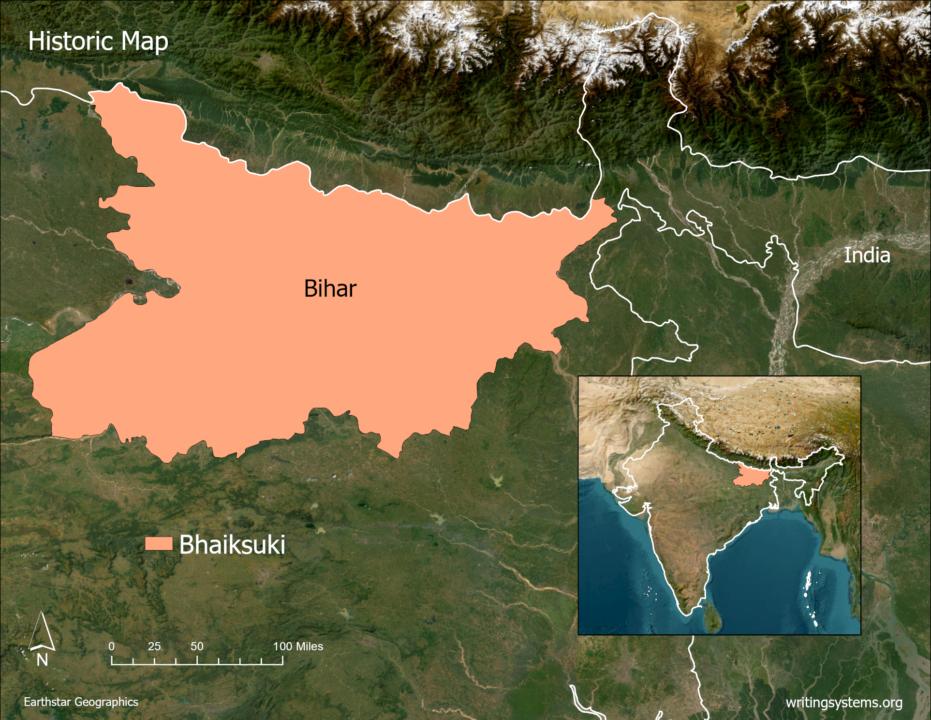“Bhaiksuki is a Brahmi-based script that was used around the turn of the first millennium CE mainly in the present-day states of Bihar and West Bengal in India, as well as in regions that are now part of Bangladesh. Records have been also located in Tibet, Nepal, and Burma. The script is known variously as the ‘Arrow-Headed Script’ or ‘Point-Headed Script’ in English, ‘Pfeilspitzenschrift’ in German, and ‘Śaramātr̥kā Lipi’ in Hindi and modern Sanskrit. An older designation, ‘Sindhu(ra)’, has been used in Tibet for at least three centuries.
The script is attested exclusively in Buddhist textual materials. Only eleven inscriptions and four manuscripts written in this script are presently known to exist. These are the Bhaiksuki manuscripts of the Abhidharmasamuccayakārikā, Maṇicūḍajātaka, Candrālaṃkāra, and at least one more Buddhist canonical text. The codex of the Abhidharmasamuccayakārikā was kept in Tibet in the 1940s, but it is now inaccessible and its exact place of preservation is currently unknown. The fourth codex was discovered in Tibet and was recently shown in a Chinese documentary; however, information about this manuscript is still limited. It is likely that additional materials in Bhaiksuki may become available in the future.
There has been scholarly interest in Bhaiksuki from the time that Cecil Bendall (1856–1906) presented the script to Western academic communities in the 1880s. In the 1890s, Bruno Liebich (1862–1939) made further advances through his study of the materials available at the time. More recently, the Bhaiksuki manuscript of the Maṇicūḍajātaka was studied by Albrecht Hanisch (2009) and the manuscript of the Candrālaṃkāra
was presented by Dragomir Dimitrov (2010) in a facsimile edition. During the period 2004–2008 the Arrowheaded Script Project at the Philipps-Universität Marburg, Germany was engaged in research on Bhaiksuki and in developing resources for study of this script.“ (Pandey & Dimitrov, p. 1-2)


